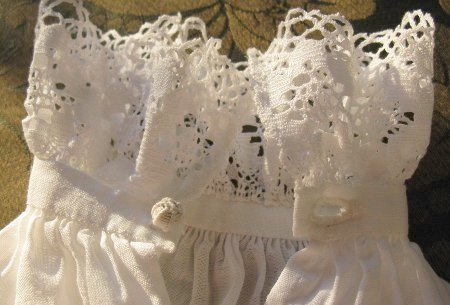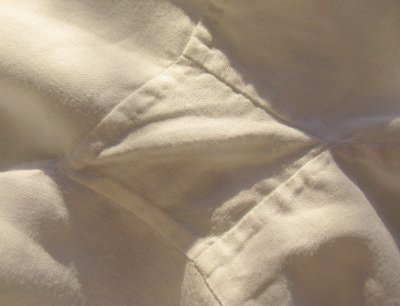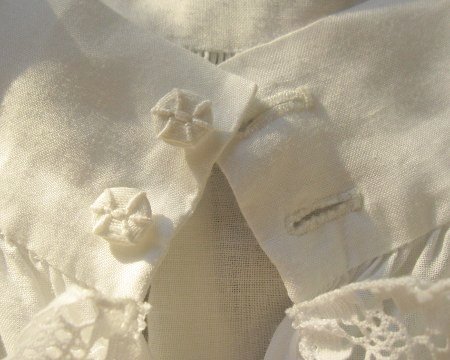The shirt is cut and put together following the tutorial of La Couturière Parisienne (which is based on Garsault's L'art du Tailleur from 1760's) quite faithfully. I'm greatly indebted to that site. The side-, shoulder- and underarm seams are machine sewn, but flat felled by hand. All the rest I luckily had the patience to hand sew, because it really makes even more difference to the look than I would have believed before. Contrary to my doubts the shirt has also survived a few times in a washing machine without anything giving away.
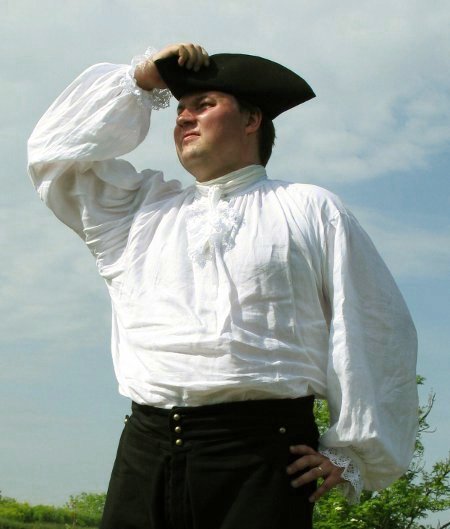
So far so good, but having for once punctually followed the tutorial instead of driving myself crazy by paranoid measuring and estimating by myself, the result was that it didn't fit in the end. The shoulder ended up a bit too short (luckily I could still make it up with a longer sleeve), which is actually not very surprising considering that the original cutting diagram is intended for a slim 18th century French man, not a modern well built Scandinavian guy. Gathering the neckline evenly didn't work either, but made the shoulder pieces fall way too much on the front side, so I decided to forget the accuracy, cut the front of the neckline a few cm lower and gather it more on the back.
When I was at last happy with the neckline I gathered the sleeves into the wristband. I'm happy I decided to go for the hand sewing because the gathering looks just great, even if it's not totally even.
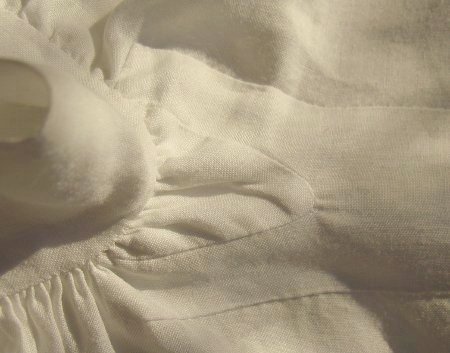
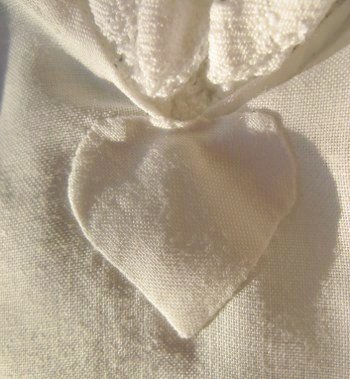
I was not quite sure what kind of buttons this kind of shirt was supposed to have. I imagine flat, round thread buttons might be correct, but at the time I din't have time (or perhaps patience) to go hunting for right kind of rings for the base, so I went for a substitute. The wrist buttons are worked on a cotton crocheting thread over wooden beads, a historical method but perhaps a bit old fashioned for this period - I'm really not sure. At least they don't look like plastic! On the collar I wanted to avoid the bulk created by bead-buttons, so I covered flat plastic buttons using a similar technique. Not quite as nice, perhaps, but they are covered by the scarf/tie anyway.
I had taken pride before by knowing how to make hand made buttonholes, but now I learned it's quite another matter to make them in thin, strechy material than in thick wool with stiff iron on-interfacing. Well, the last of them looks almost tolerable.
For the last thing I sewed lace ruffles on the front slit and wrists. They are easily removable following the period method, since laundry methods used to be somewhat more rough, and delicate lace might suffer from it.
In the bedroom scene of "Duchess" I noticed that Dominic Cooper's shirt seemd pretty similar to this one. It does feel a bit freakish to be more thrilled about spotting a gusset than witnessing steamy forbidden love, though.
<< Back to the Project Gallery
